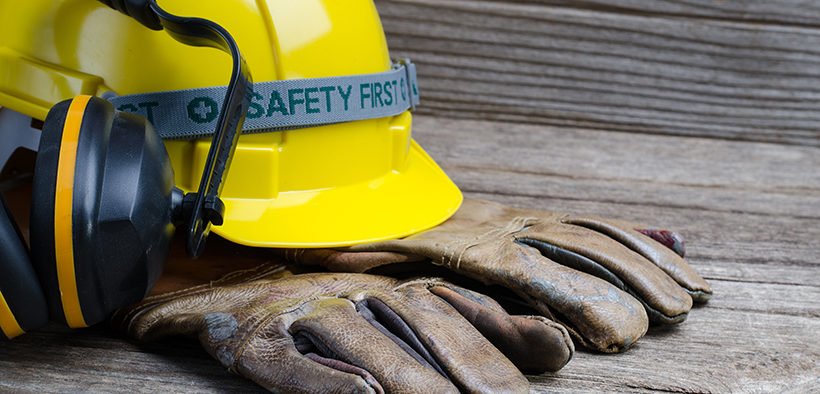

Construction workers are more vulnerable to injuries than employees in other occupations due to the unique hazards and risks they face. Each year, one in 10 construction workers is injured while on the job, according to the Occupational Safety and Health Administration (OSHA). This high prevalence of injuries is alarming for both the workers on-site and for those leading construction firms.
The good news is these risks can be minimized by committing to a strong safety culture, using pre-task plans on a daily basis and ensuring all employees are properly trained for the job at hand. Doing so will help to eliminate or control risks to the degree possible. Now, we’ll break that down further.
Prioritizing Ongoing Safety
Establishing a culture where safety is a core value is the key, starting with the actions of senior management and field leaders. Field leaders must be able to adapt to changing situations daily without compromising safety. From that point, safety must be ingrained into operations, rather than seeming like an add-on that’s only important because a manager said it was important. All employees should know their safety is truly imperative to the success of the project and the construction firm.
An interactive safety orientation sets the tone for how employees will perform on the jobsite. New workers should leave with clear expectations of their day-to-day responsibilities and how those duties will not only ensure their own safety, but also the safety of other workers.
Daily safety huddles should be used to review pre-task plans that address the work that will be performed, the anticipated risk/exposure and the controls necessary to ensure the task is completed safely. Every employee should know they have the authority to call a “time-out” if they sense something is not right or if the task being performed changes. Weekly toolbox talks should be used to address important safety issues or changes in procedures and should always include an education piece to share information among the project team. Ongoing safety training ensures everyone is set up for success, regardless of their experience level.
In addition to focusing on mitigating risks associated with OSHA’s Fatal Four (falls hazards, electrical hazards, struck-by hazards and caught-in or between hazards), contractors should actively address two of the leading causes of non-fatal injuries in construction: sprains and strains, and slips and falls. Let’s dive into some of the practices that can help prevent these injuries.
Sprains and Strains
Worker sprains and strains are often caused by incidents involving manual material handling and repetitive motion. Since manually handling materials is part of the job that cannot be eliminated altogether, employers should pre-plan work activities to eliminate or decrease demand for manual material handling tasks, reduce stressful body movements, perform work at a steady pace without rushing and improve the physical conditions of the jobsite, if possible.
Workers should use carts or equipment such as cranes, excavators, loaders, skid steer loaders and backhoes to assist with the process. Attempting to lift an awkwardly shaped object independently rather than asking a coworker for help is an example of how a strain can occur. This type of situation can be avoided by coaching employees to feel empowered to ask for assistance whenever appropriate.
Contractors often implement stretch and flex programs, as well. At Graham Company, we recommend dynamic stretching exercises at the beginning of the work shift to prepare for the physical demands of the job, micro-breaks as necessary to stretch certain body parts that are being used repetitively and static stretches at the end of the shift. Workers embracing these techniques can increase their strength and flexibility, reducing the risk of an injury occurring.
Slips and Falls
Slips and falls are one of the most prevalent injuries on construction sites and can range drastically in terms of severity. All, however, are completely preventable. Slips and falls are typically caused by housekeeping issues, failure to keep aisles or passageways free of debris, poor ground conditions or inadequate access to work areas.
Developing a “nothing hits the floor” mentality can help contractors keep up with housekeeping. Rather than letting materials and debris pile up around the jobsite, where it can be a hazard to those walking or working, workers should place debris into skid pans, totes or bins that can easily be removed from work areas.
Contractors should also do their part to ensure walking/working surfaces are kept as clean and dry as possible, and that workers are given adequate time to clean their work areas after completing a task. While on the job, workers should also be required to wear leather work boots with rubber soles. Steel toe or composite toe boots may be necessary based on the tasks being performed.
Logistically, each jobsite should have an easy access point — not requiring workers to climb down a steep embankment or deal with a similarly dangerous situation. In addition, the rocks or gravel used at project access points should be small and easy to walk on in order to minimize the risk of foot and ankle injuries from larger rocks.
Nearly all incidents that occur on construction sites are preventable. We’ve seen firsthand that firms that prioritize safety have fewer injuries because the expectation is that all workers work safely all the time. If you’re unsure where to start, consult an insurance broker who can help identify and mitigate potential risks specific to your project.
Mark J. Troxell is senior vice president of safety services for Graham Company.





